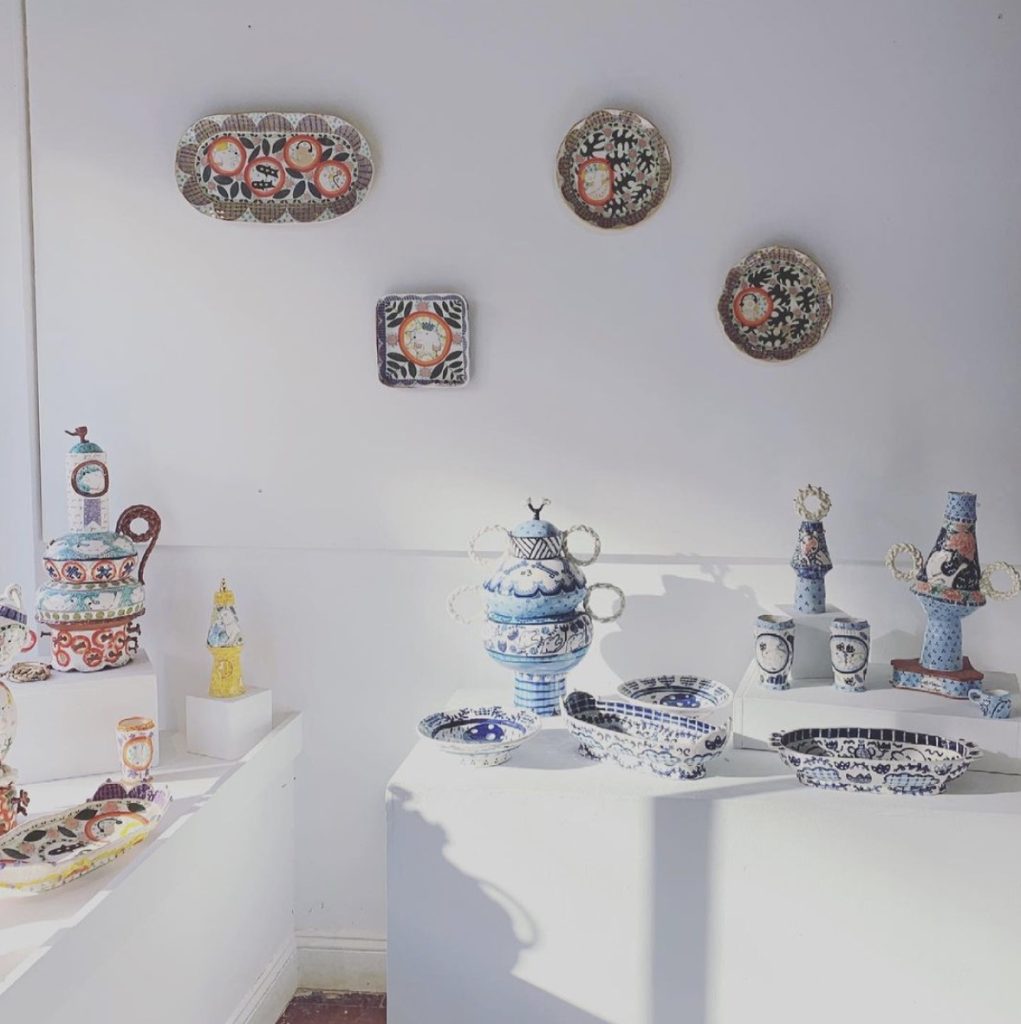Studio Visit: Jewelry Brand Haricot Vert
Collage informs these whimsical accessories, handmade in this NYC-based studio
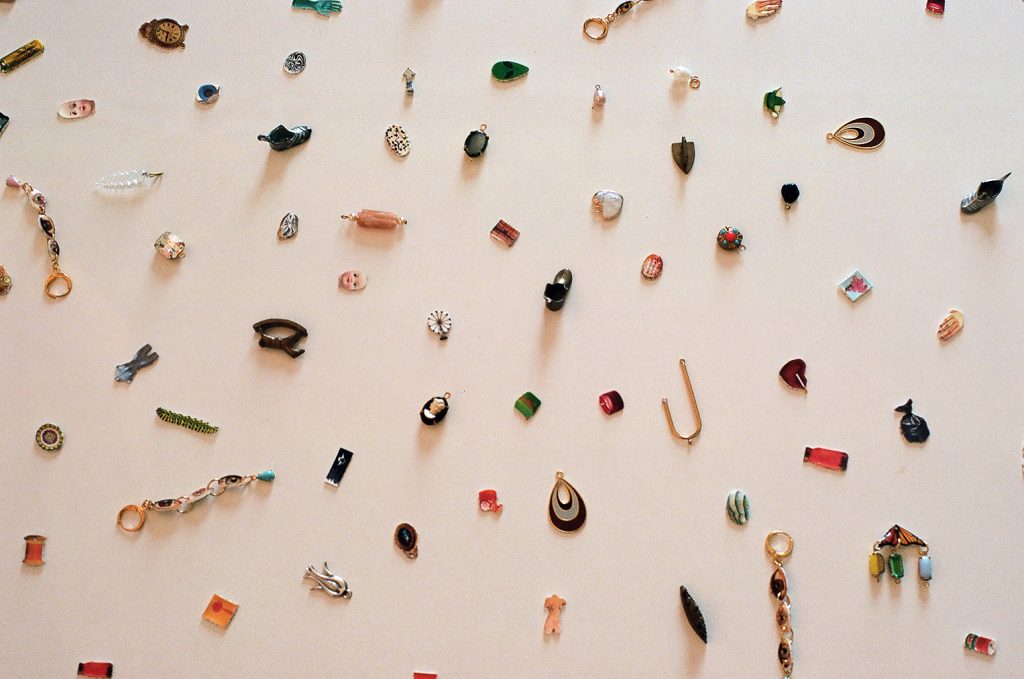
A modest, blue-toned apartment in Ridgewood, Queens currently doubles as a studio for the whimsical independent jewelry brand Haricot Vert. Inside the living-room-turned-workspace, founder Kelsey Armstrong pairs vintage Monopoly pieces, miniature cutlery and other found objects with her signature picto-charms—tiny photos turned into glazed pendants that Armstrong crafts by hand. Owned, operated and made almost entirely by the founder (save for the occasional assistant), Haricot Vert’s DIY ethos translates the art of collage into playful, mixed-media jewelry.
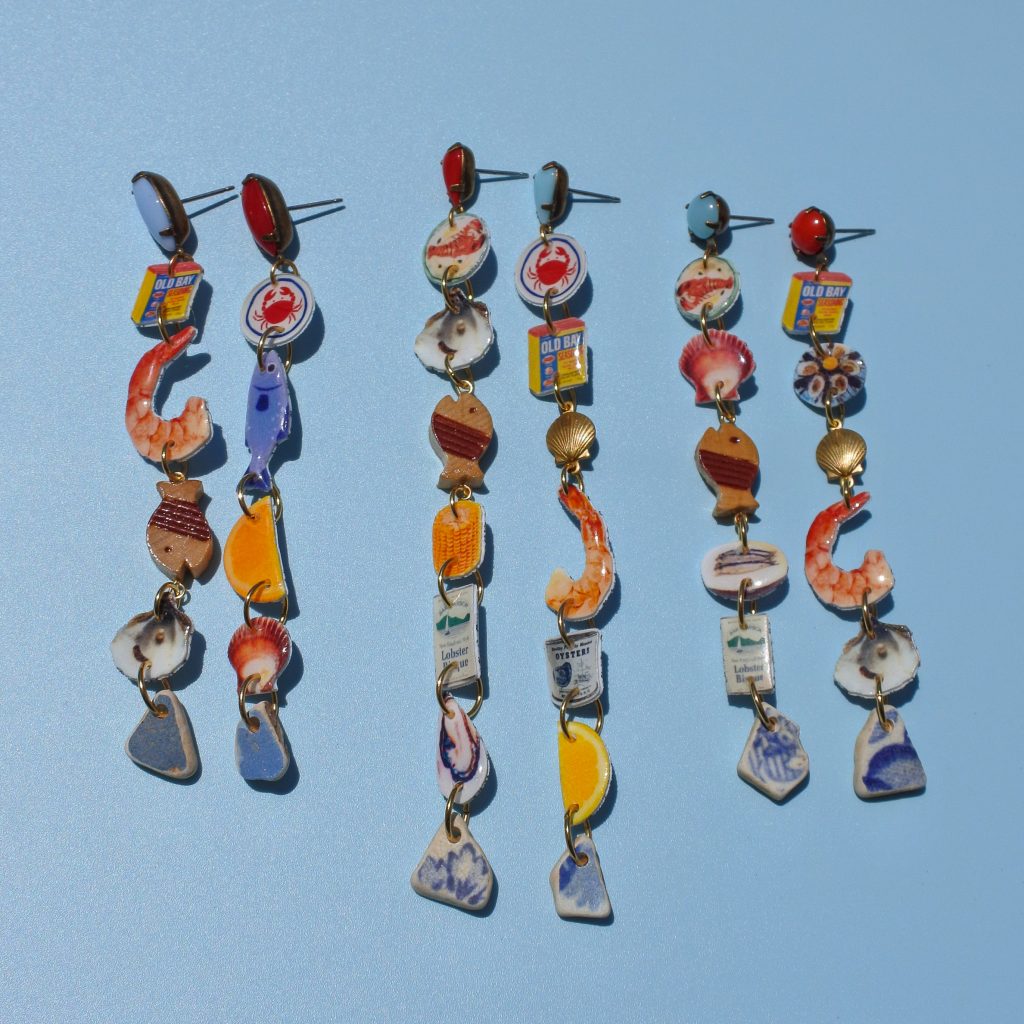
Sifting through the brand’s collection feels akin to flipping through a scrapbook. In one piece, a charm of a plate of sardines dangles above a baguette, evoking European jaunts. In other works, a checkered tablecloth alongside half a peanut butter and jelly sandwich and a roll of film recall picnics. Throughout each piece’s assemblage of visuals and charms, a dreamy childlike wonder for the world emerges, making Haricot Vert as endearing as it is detailed. On naming the brand, Armstrong says, “One day I saw haricots verts (which means green beans in French) on a menu, and I was just like, ‘Oh my God, how cool would it be to create a green bean universe?'”

The underpinnings of the studio began when Armstrong took a mixed media and collage class at university, where she became fascinated with Robert Rauschenberg and the medium’s accessible form. “It’s cool that you can paste an eyeball onto an old picture of something and it just transforms the image,” she tells us. A few years later, that fascination persisted as Armstrong moved from France to New York and decided to start experimenting with collage as a form of jewelry-making.

After a few trial-and-error experiments, she released her first collection of dangly earrings. She recalls, “As time passed, one thing led to another and then each time I would release stuff, it would sell out quicker and quicker. Eventually, I was like, ‘Who am I kidding? I need to quit my job.'”

Six months since Armstrong went full time, and many sold-out collections later, the founder continues to recreate her process. The first steps, however, always remain the same. She tells us, “Generally, I work in a thematic way. I take themes that inspired me and then from there, go into the research process of sourcing images.” Many stem from the designer’s collection of vintage books as well as her personal archive of photos of nearly 50,000 images.
“I do think my jewelry is poetic because every design tells a story of my life. It’s very intimate and personal in a way,” she says. The Not in Paris collection is one such example, comprising picto-charms crafted from images in her camera roll that were taken when she lived in France.

After settling on a theme and collecting imagery, Armstrong scans the photos onto her computer to print out onto polymer plastic, a material not dissimilar to shrink plastic. Once the scans are printed, Armstrong cuts them out using a smart cutting machine. “This is like a machine that scrapbooking moms use,” she says. “It is awesome. Before, I was cutting everything by hand, and my assistant in the beginning of the summer would come for a day and just literally cut charms and charms and charms.”
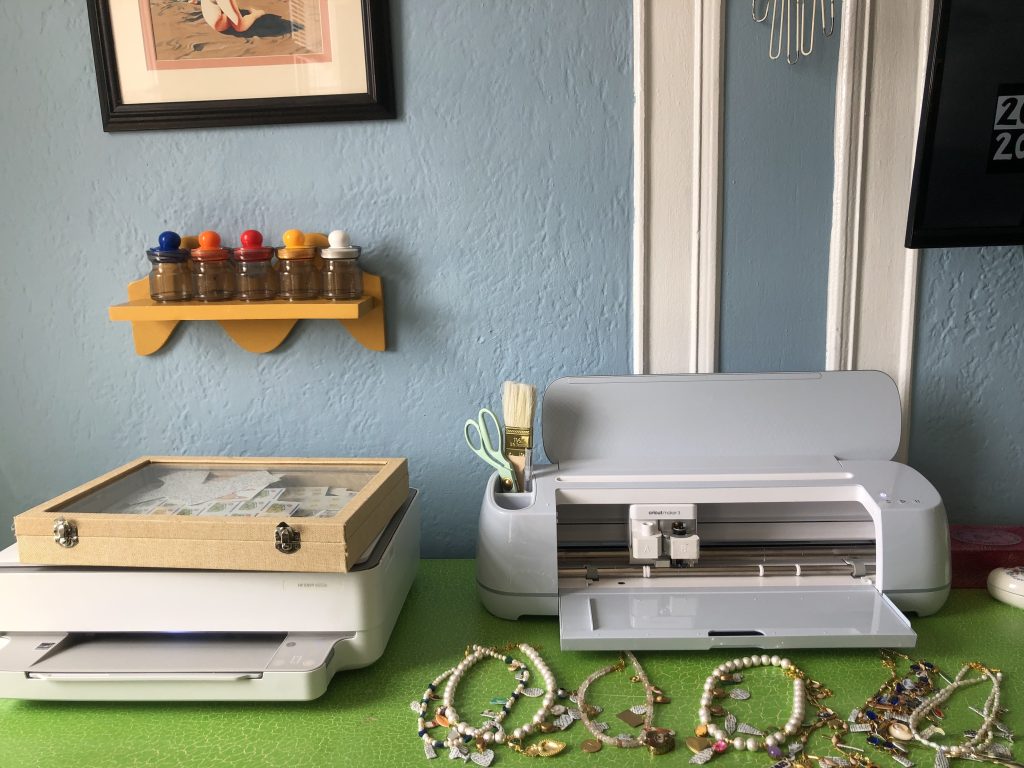
Once everything is the right size, Armstrong has to bake the plastic cutouts, a sensitive and finicky process that reacts differently depending on the temperature and humidity of the room. Depending on the weather, Armstrong will experiment with different ovens, from regular convection to vintage Shrinky Dink ovens. “There’s so many details about everything to make a perfect charm. For them to come out properly, you have to have the right temperature and monitor the temperature and thermodynamics. I’d say 30% of the charms don’t come out,” she explains.

For the ones that don’t meet Haricot Vert’s standard of quality, Armstrong saves them to donate or give away. In fact, almost all of their scraps are reused, a practice that stems from Armstrong’s dedication to eco-responsibility. From the leftover cutout material to vintage Swan-shaped jewelry boxes, Armstrong attempts to repurpose everything. Aside from the hardware and charms she makes, she tells us, “Everything to this day is vintage. Every single stone, every single pendant, everything is completely sourced. I go on buying trips to Rhode Island, where there’s this famous, giant vintage deadstock and wholesale warehouse.”

When the picto-charms do bake correctly, Armstrong can begin the puzzle-piece part of her process which involves laying everything out to see which charms and vintage pendants correspond with one another to craft the right collage-like earring. Then, each charm is glazed, a messy and often tedious process as the charms are so small to work with. Once done, they can be drilled to attach to hooks.

Right now, Armstrong is preparing for an upcoming earring and necklace collection made in collaboration with The Sage Vintage (released today, 31 August) as well as a handbag selection.
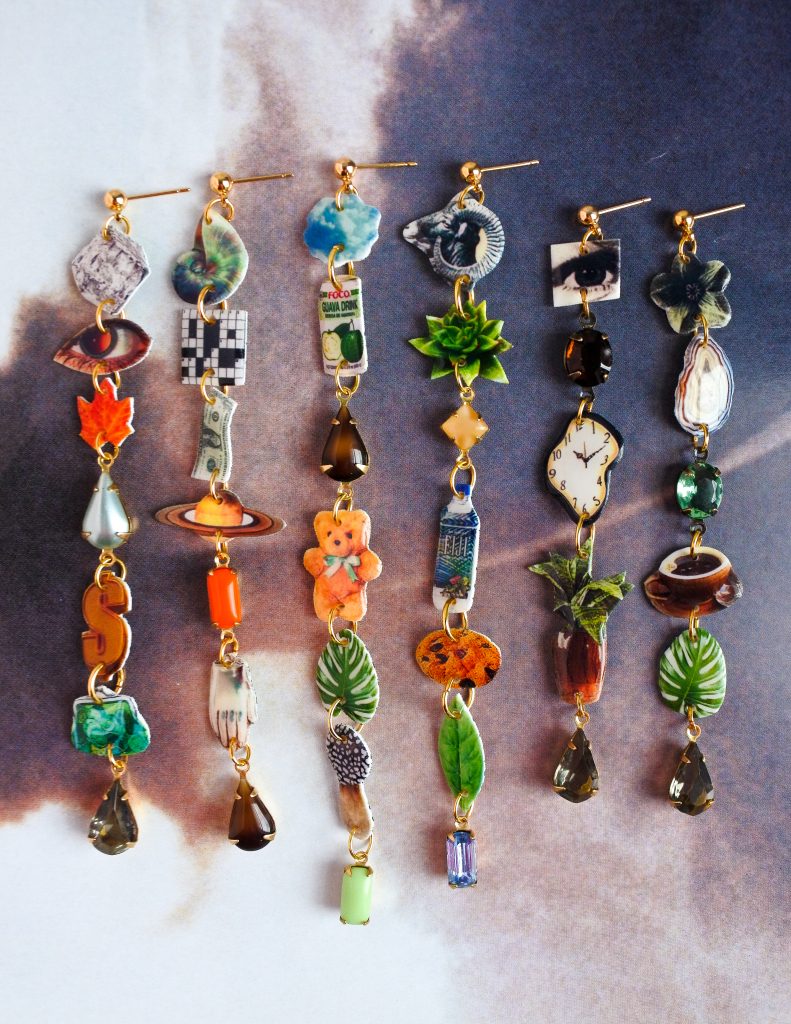
Without taking itself too seriously, Haricot Vert expands collage into the realm of jewelry. Born from a dedication to the painstaking process of handcrafting trinkets, the studio continues to evolve with Armstrong’s process. With many more collections and iterations already in the works, the Haricot Vert universe remains ever jubilant and romantic.
Hero image courtesy of Haricot Vert
